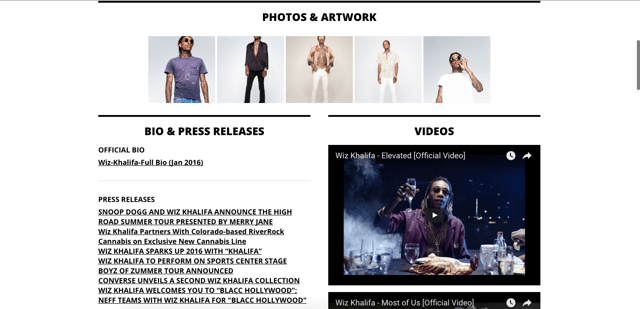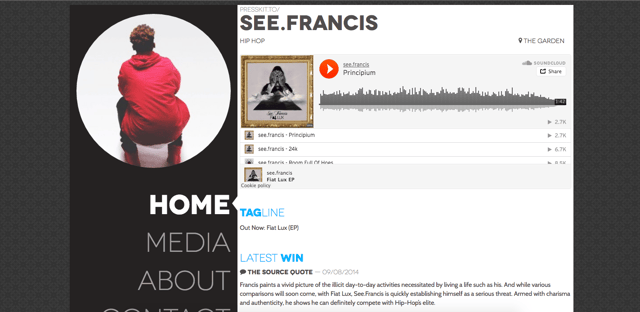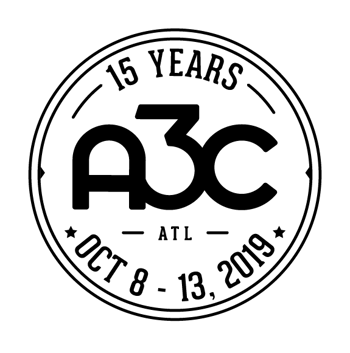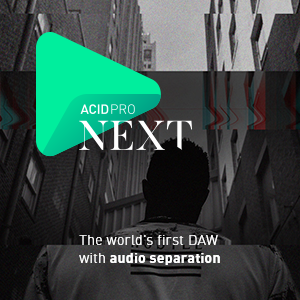The EPK is still an essential tool in the music industry, if you want to stand out when submitting your music or applying to perform at a show, an EPK is absolutely necessary.
However, before we get into the nitty gritty of EPKs, I wanted to take a minute to talk about a movie that, surprisingly, connects an underlying theme with the music industry.
That movie is the 1989 Patrick Swayze flick, Roadhouse.
If you’ve never seen it, it’s about a rowdy bar and their team of bouncers. Basically, any time there was a problem, the bouncers went a little over board, and resorted to overly-violent tactics -- which just wasn’t good for business.
Because beating up your customers is never a good idea.
This is when Patrick Swayze’s character is hired as head of security, and decides that the bouncers are going to straighten up their act. Instead of beating up patrons, he decides that the bouncers are simply going to: “be nice”.
If there’s a fight, they’ll be nice and politely break it up.
If a patron mouths off to a bouncer, they’ll be nice and politely escort them out.
If someone is rude to a bartender, they’re going to be nice, and handle it in a business-like manner.
And as odd as it may sound, there’s actually a huge connection here with the music industry, just instead of “be nice” it’s “be professional”.
Instead of spamming links to journalists, we’re going to be professional, and create media lists with unique pitches.
Instead of blindly posting on Twitter, we’re going to be professional and develop a content mix strategy.
Instead of buying on to shows and messing up our money, we’re going to develop our own materials, pitch and be professional about booking.
In an industry of literally millions of artists, the number one way to stand out, is simply by having a professional presence and approach. Being professional in the industry is what “Act Like You’ve Been Here” is all about, and one of the cornerstones to a professional approach is the EPK.
What Is An EPK?
An EPK stands for electronic press kit, and it’s a summary of your career and your brand. It includes items such as hi-res photos, recent news coverage, streaming links and more.
Basically, it’s a quick way for press, venues and other influencers to see all of your info in one spot, rather than having to dig through your website, or a series of links when writing a story on you, or looking to book you for a show.
So, if you’re emailing a venue to get booked, or contacting a writer to cover your music, sending them your EPK gives them a detailed look at you, your career and your brand as an artist. It also has all of the materials they need to quickly move if they make a decision.
Typically an EPK includes the following information:
- Hi-Res Photos
This is important for writers to have, so they can quickly put together an article for you. Similarly, it’s helpful for venues to grab photos for promo materials. A quick note: Be sure to have live performance photos in your EPK. This helps show venues that you’re familiar with the stage, and gives them a feel for your live set.
- A Biography
This is a good place for a long-form (yet still succinct) biography. This is great for writers who are covering your work, or a venue working up promo copy.
- Recent and Upcoming Live Performances
For getting booked, it’s essential to list your upcoming and recent shows. This proves you’re active, and makes venues feel more comfortable in booking you.
- Your Music (and videos)
This one is obvious, but you need a place for venues, writers and anyone else to check out your music. I recommend they be in a streaming format, embedded in your EPK, rather than anything that needs to be downloaded or linked-out.
So, in other words, SoundCloud and YouTube embeds are great for EPKs.
Where Is An EPK Housed?
Okay first, and foremost, let’s end the streak of the PDF EPK. I’m always surprised with the amount of artists who still send over an EPK housed in an PDF format, because it’s simply just a pain in the ass -- for both the artist and the recipient.
A PDF doesn’t allow for easy updates for the artist -- you have to redesign your PDF EPK each time there’s new updates, news or releases. Similarly, a PDF has to be downloaded and clicked through. It’s just not very user-friendly for the person you’re sending it to.
Granted, I’ve seen some that are linked with Dropbox in a way that’s clean and smooth, but they still require major maintenance any time there’s a new show, track or blog coverage that needs adding.
The PDF trend is actually a remnant of when EPK’s were actual physical folders that were mailed to press and venues. With the introduction of the internet and email -- press kits became electronic press kits, and were attached as a PDF to venues and writers.
Later, as the internet grew and making a website became easier -- some artists began simply creating a webpage for their EPK. However, some, still stuck with sending the PDF.
So, to answer the question on where to house your EPK:
- Best Option: Your Website.

The best place for an EPK is it’s own page on your website. So, www.yourwebsite.com/press -- and then have areas of your website designated to press quotes, images and tracks.
This way, if a venue or writer stumbles across your website and they want to know more, they can just quickly move over to your press page to get all of the details. Similarly, sending someone a URL in an email, is much more clean than an attachment, or a series of Dropbox links.
A good example of this can be found on a lot of major label sites, or large indie artist websites. For instance, Wiz Khalifa’s EPK is a great example of a one-page EPK, housed on his website (via Atlantic Records).
- Second Best Option: A Third Party Application

Perfecting the website EPK means that you need a good web designer, or a good template to begin with. Not all artists have this, so therefore, sometimes folks want to reach out to an existing service.
I’ve used this with clients, and I know plenty of labels and distributors that also use third party applications. Some of the first to pop up were ReverbNation and Artis ECard. Nothing against these two platforms, but personally, I feel as if the design is limiting as well as the functionality. They can still function as an EPK if you spend time with them, but I tend to advise against these.
Sonicbids isn’t a bad choice. A3C uses Sonicbids for booking, and I was actually a columnist for the Sonicbids blog for some time. If you’re unfamiliar, Sonicbids assists artists in booking through their unique online system. You create a Sonicbids EPK, and then find shows in your area, and apply through the Sonicbids platform.
Finding a show near you, or one you’re interested in, might not always be possible. However, events like A3C, Brooklyn Hip Hop Festival and even Bonnaroo uses Sonicbids for booking purposes. So having an account does payoff.
My main gripes with the Sonicbids EPK is that it’s really intended to focus on Sonicbids gigs.
The layout isn’t that customizable, and the end-user has to click around a bit to find information. Which, they should expect if it’s a Sonicbids event. However, sending a Sonicbids EPK outside of Sonicbids, isn’t always design friendly. It can even be a bit off-putting. To have a Sonicbids EPK, you also need an active Sonicbids account, which isn’t much ($10 a month) but it is an investment.
My Preference, Presskit.to is a relatively low-key platform, but I really enjoy it. It’s also 100% free. The company is now run by Caroline Distribution, which is owned by Universal. It genuinely mimics a microsite, while having all the information succinct, and just a click or two away.
You can easily incorporate streaming embeds, as well as “wins” which showcases your latest news. I’ve used this for my artist for the past few years, and so has Caroline Distro, which is a very solid major-fueled distribution and promo company. The above photo is for artist See.Francis, check out his EPK and see if you dig presskit.to!
The Do’s & Don’ts of an EPK:
Your EPK is going to differ depending on your personal taste as well as where you are in your career. However, to ensure optimum use of your EPK, ensure the following:
- Do update it weekly or monthly, Don’t leave it unattended.
As someone who has reviewed EPKs as a writer, as well as within the label scene, there’s nothing more off-putting than an out-of-date EPK. Be sure to keep it updated with recent news -- and more importantly, anything that’s a few years old, get rid of it.
Sure, you may be proud of that Complex feature, but if it was from 2010, might be time to scrub it and build up new wins.
Also ensure that your latest tracks, images and more are uploaded, so press and more have an updated view of your work.
- Feel free to tell your story, but don’t go on too long.
A bio should always be succinct, however, feel free to go a bit more in-depth in your EPK bio than you might in your website, a pitch or other online outlets.
- Keep everything quality, don’t post poor quality images or bad grammar.
Don’t include demos, or MySpace selfies. These materials are for press use, or for applications to gigs. Ensure that your photos, images, and even the text portions showcase your professional side.
- Link to your social channels, don’t forget to showcase your social media presence.
Any artist in today’s market relies on their social media. Ensure your social media links are included -- and more importantly, that you’re utilizing your social media to it’s fullest advantage.
How to Use Your EPK.
This is the easiest part: Just include it in your pitches!
The point of an EPK is that you don’t have to give a venue or journalist a myriad of links when you reach out. This keeps your pitch to press and venues to-the-point.
Pitching a venue or blogger is another article in itself, but the inclusion of a solid EPK can really boost your chances, as it makes research less heavy on their part.
An example of a good booking letter might be below:
“Hey Chris,
My name is Roger X and I’m currently mapping out a quick tour through the south. I just wrapped up a SXSW showcase in March, and will soon be performing at A3C this fall as well.
We will be in Lafayette in June, and was wondering if you had any availabilities during that area for a time slot. We’d love a chance to perform, and we’ll certainly be in the surrounding area that month.
You can stream my latest album at the link below, but I’m also including my EPK which includes live photos and videos from past performances.
Hope to speak soon.
Thank you.”
Then of course, add the EPK link and that other direct link you mentioned in the pitch. Simple, but effective. Also, be sure to always follow up every few days, so you can ensure you get a response.
The EPK is a pretty straight-forward tool, but it ensures that you look professional and put together. Even simply having an EPK makes you come off as polished, and more put-together than others vying for that same spotlight.



